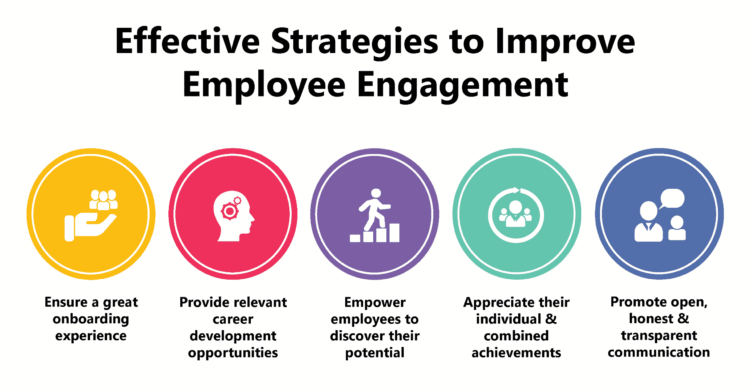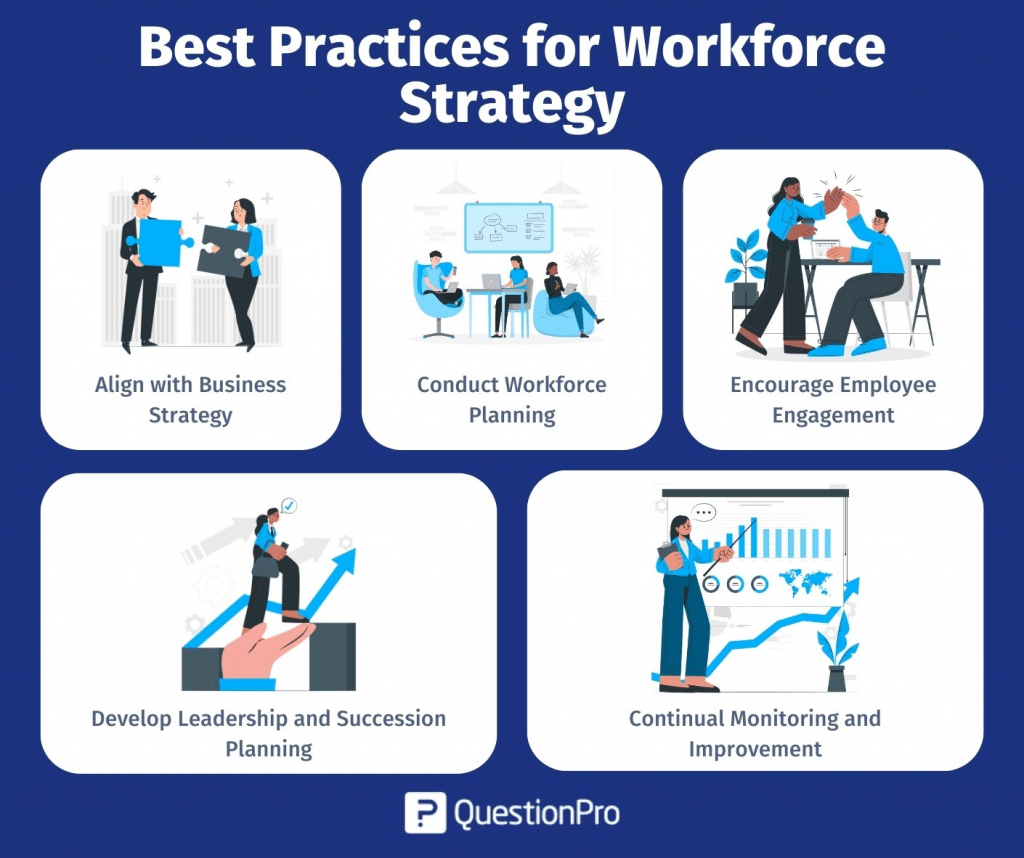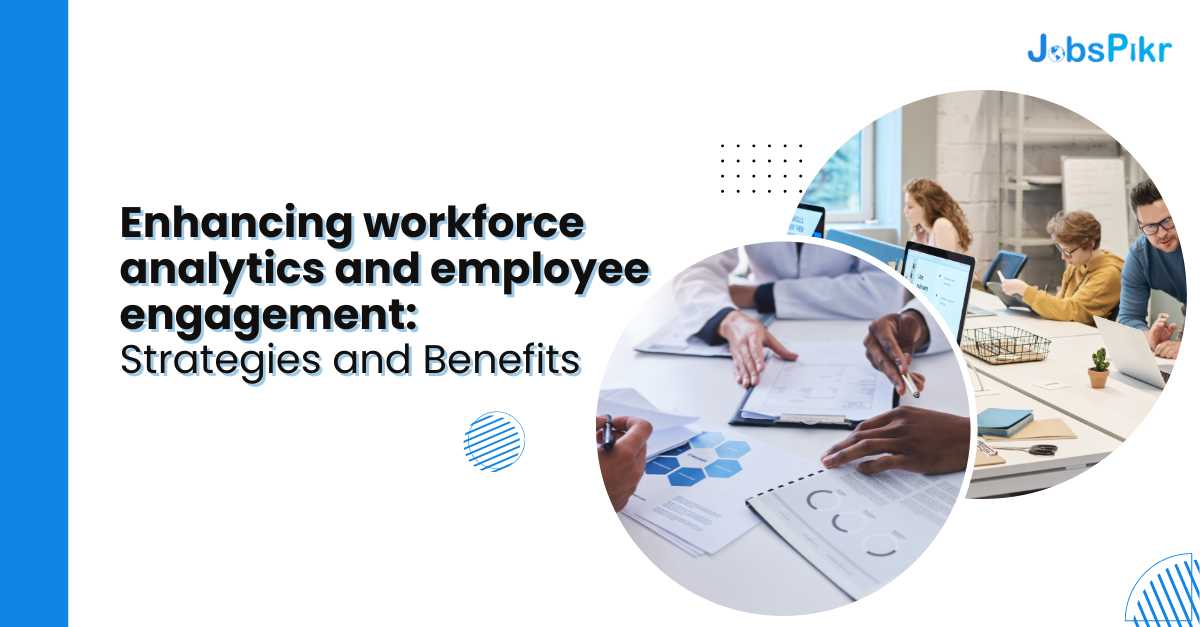In this competitive landscape, maintaining a highly engaged workforce is critical to organizational success. Engaged employees are more productive, motivated, and loyal, contributing to a positive workplace culture and better business outcomes. Workforce analytics and employee engagement are two powerful concepts that, when combined, can transform how organizations measure and improve employee engagement. This article explores how workforce strategies can be used to enhance employee engagement, discussing strategies for implementation and the benefits of maintaining a highly engaged workforce.
Understanding Workforce Analytics and Employee Engagement
Workforce analytics involves the collection, analysis, and interpretation of employee-related data to make informed HR decisions. By leveraging workforce analytics, organizations can gain insights into various aspects of their workforce strategies, including employee performance, satisfaction, and engagement. Employee engagement, on the other hand, refers to the emotional commitment and involvement that employees have towards their organization and its goals. Engaged employees are enthusiastic about their work, take pride in their contributions, and are motivated to help their organization succeed.
Combining workforce analytics and employee engagement allows organizations to measure engagement levels accurately, identify areas for improvement, and implement targeted strategies to enhance engagement.

Source: hifives
Strategies for Implementing Workforce Analytics to Enhance Employee Engagement
1. Collect Comprehensive Employee Data
The first step in leveraging workforce analytics and employee engagement is to collect comprehensive employee data. This includes data from various sources, such as employee surveys, performance reviews, attendance records, and feedback tools. By gathering data from multiple touchpoints, organizations can obtain a holistic view of employee engagement levels.
2. Analyze Engagement Drivers
Once data is collected, the next step is to analyze the drivers of employee engagement. Workforce strategies can help identify the key factors that influence engagement, such as job satisfaction, work-life balance, leadership effectiveness, and career development opportunities. By understanding these drivers, organizations can develop targeted strategies to address specific areas that impact engagement.
3. Develop and Implement Engagement Initiatives
Based on the insights gained from workforce analytics, organizations can develop and implement engagement initiatives tailored to their workforce’s needs. These initiatives may include recognition and reward programs, professional development opportunities, flexible work arrangements, and wellness programs. By addressing the specific factors that influence engagement, organizations can create a more engaging and supportive work environment.
4. Monitor and Measure Engagement Levels
To ensure the effectiveness of engagement initiatives, it is essential to continuously monitor and measure engagement levels. Workforce analytics can provide real-time insights into how engagement initiatives are performing and whether they are achieving the desired outcomes. Regularly measuring engagement levels allows organizations to make data-driven adjustments to their strategies and ensure continuous improvement.
5. Foster a Culture of Feedback
Creating a culture of feedback is crucial for enhancing employee engagement. Encourage employees to provide feedback on their experiences, challenges, and suggestions for improvement. Use workforce analytics to analyze this feedback and identify common themes and areas for improvement. By actively listening to employees and addressing their concerns, organizations can build trust and demonstrate their commitment to employee well-being.
6. Communicate and Celebrate Successes
Effective communication is key to maintaining high levels of employee engagement. Regularly communicate the results of engagement initiatives and celebrate successes with the workforce. Sharing positive outcomes and recognizing employees’ contributions reinforces their sense of value and belonging within the organization.

Source: QuestionPro
Benefits of Maintaining a Highly Engaged Workforce
1. Increased Productivity
One of the most significant benefits of workforce analytics and employee engagement is increased productivity. Engaged employees are more motivated, focused, and committed to their work. They are willing to go the extra mile to achieve their goals and contribute to the organization’s success. As a result, organizations with highly engaged workforces often experience higher levels of productivity and efficiency.
2. Improved Employee Retention
Maintaining a highly engaged workforce can also lead to improved employee retention. Engaged employees are more satisfied with their jobs and less likely to seek opportunities elsewhere. By investing in employee engagement initiatives and addressing the factors that influence engagement, organizations can reduce turnover rates and retain top talent.
3. Enhanced Employee Well-Being
Workforce analytics and employee engagement initiatives can significantly enhance employee well-being. By addressing the specific needs and concerns of employees, organizations can create a supportive work environment that promotes work-life balance, reduces stress, and enhances overall job satisfaction. Happier and healthier employees are more likely to be engaged and productive.
4. Better Organizational Performance
Organizations with a highly engaged workforce tend to outperform their peers. Engaged employees are more innovative, collaborative, and committed to achieving the organization’s goals. This leads to better organizational performance, including increased profitability, higher customer satisfaction, and improved competitive advantage.
5. Positive Workplace Culture
Workforce analytics and employee engagement initiatives contribute to the development of a positive workplace culture. When employees feel valued, supported, and engaged, they are more likely to contribute to a positive and inclusive work environment. A positive workplace culture fosters teamwork, collaboration, and mutual respect, creating a more enjoyable and productive work experience for everyone.
6. Enhanced Employee Development
Workforce analytics can identify areas where employees may need additional training or development. By addressing these areas, organizations can provide targeted learning and development opportunities that enhance employees’ skills and capabilities. Engaged employees are more likely to take advantage of these opportunities, leading to continuous personal and professional growth.
7. Stronger Employee-Employer Relationships
Maintaining high levels of employee engagement strengthens the relationship between employees and employers. When employees feel that their contributions are valued and their well-being is a priority, they are more likely to trust and respect their employers. This trust fosters loyalty and commitment, resulting in a more harmonious and productive workplace.
Real-World Workforce Analytics Examples Enhancing Employee Engagement
Case Study 1: Google
Google is renowned for its innovative use of workforce analytics to enhance employee engagement. The company collects and analyzes data on various aspects of employee experience, including job satisfaction, performance, and well-being. By leveraging workforce strategies, Google has developed targeted engagement initiatives, such as flexible work arrangements, professional development programs, and wellness initiatives. These efforts have resulted in high levels of employee engagement, satisfaction, and retention.
Case Study 2: Microsoft
Microsoft has also successfully used workforce analytics to enhance employee engagement. The company employs advanced analytics techniques to understand the factors that drive engagement and identify areas for improvement. Based on these insights, Microsoft has implemented a range of engagement initiatives, including employee recognition programs, career development opportunities, and work-life balance support. As a result, Microsoft has seen significant improvements in employee engagement and overall organizational performance.
Case Study 3: Adobe
Adobe is another example of a company that has effectively used workforce analytics to enhance employee engagement. The company collects and analyzes data on employee satisfaction, performance, and feedback to identify areas for improvement. Adobe has implemented various engagement initiatives, such as continuous feedback programs, wellness initiatives, and professional development opportunities. These efforts have led to high levels of employee engagement and a positive workplace culture.
Conclusion
Leveraging workforce analytics and employee engagement is essential for organizations looking to enhance their efficiency, productivity, and overall performance. By collecting comprehensive employee data, analyzing engagement drivers, developing targeted initiatives, and continuously monitoring engagement levels, organizations can create a more engaging and supportive work environment.
The benefits of maintaining a highly engaged workforce are substantial, including increased productivity, improved employee retention, enhanced well-being, better organizational performance, a positive workplace culture, enhanced employee development, and stronger employee-employer relationships. By embracing workforce strategies and prioritizing employee engagement, organizations can achieve sustainable success and create a thriving workplace.
Workforce analytics and employee engagement are not just buzzwords; they are powerful tools that can transform how organizations manage and support their most valuable asset—their people. By leveraging these tools effectively, organizations can ensure that their workforce is engaged, motivated, and committed to achieving their strategic goals.
Harness the potential of our job data to revolutionize your workforce analytics and elevate employee engagement. Signup to get started.



